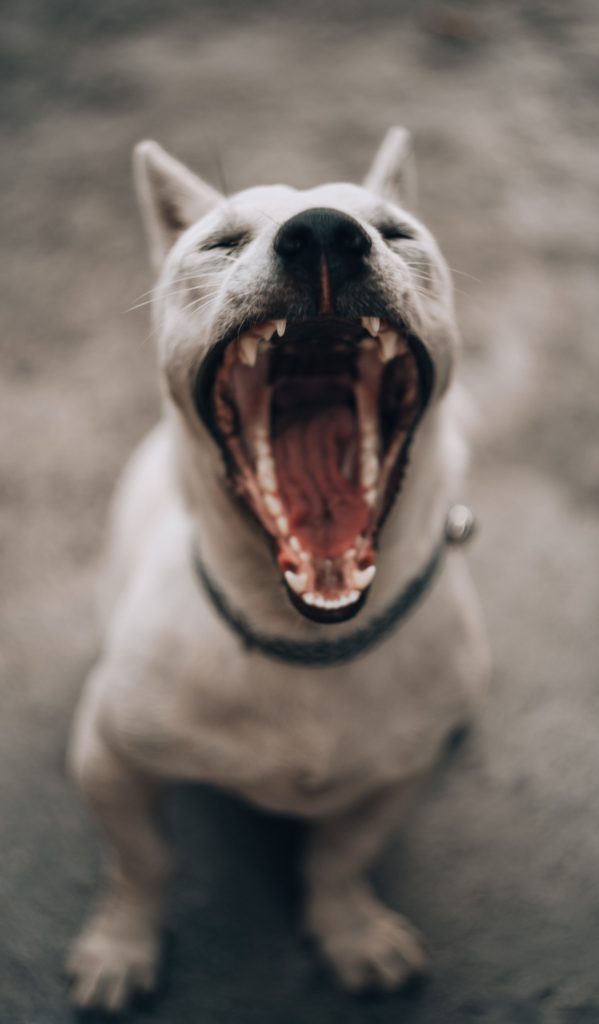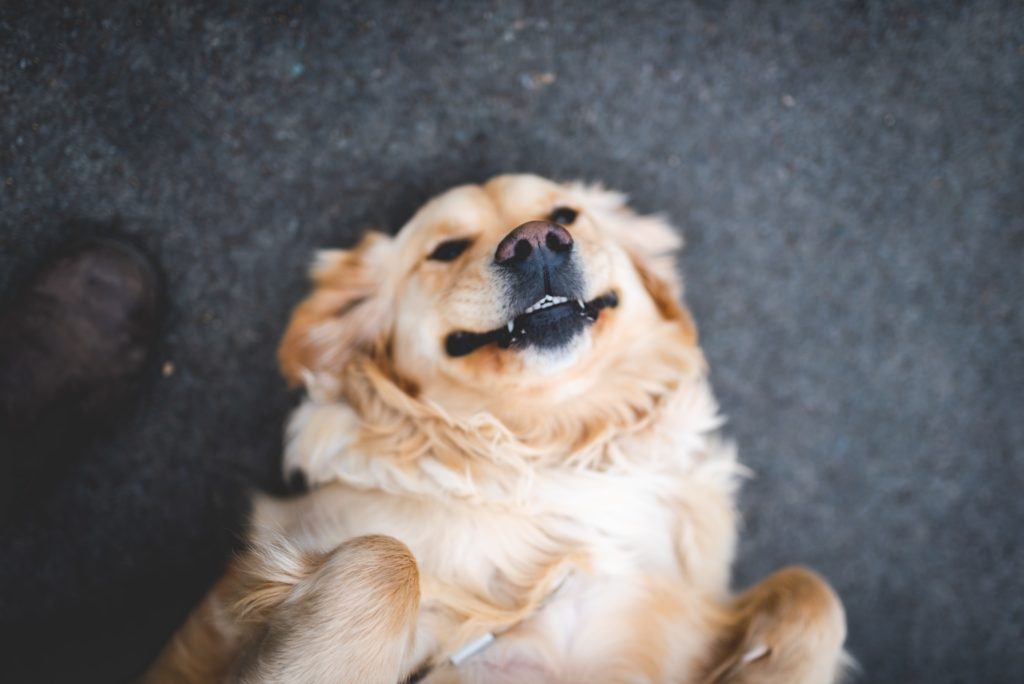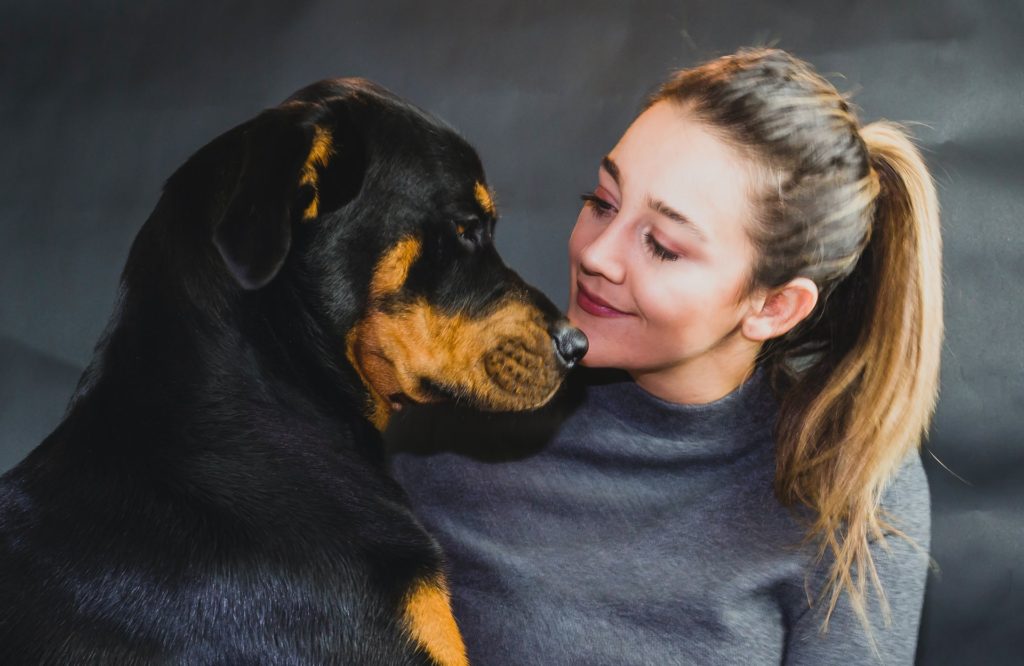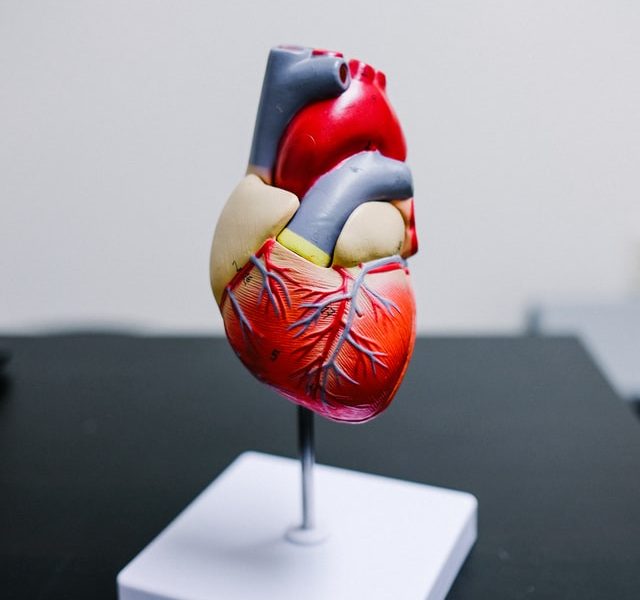Right now!

That’s the easy answer. The long answer is, well, longer! Let’s start with the most asked question when I talk to pet moms and dads about this topic:
Why do I need to brush my dog’s teeth?
There has been a lot of research on oral hygiene in pets in general, not only dogs, but let’s focus on those goofballs. By age two, 80-85% of dogs show signs of early dental disease, with the numbers rising every year. That’s an incredibly high percentage! You might be wondering if your dog has it. Chances are, he does. Don’t fret. This post is going to provide you with information on how to identify dental disease, what the consequences are if you let it do its thing, and how you can prevent it!
(Hint: it involves a doggy toothbrush!)
What is dental disease?
When we’re talking about dogs and dental disease, we’re actually talking about periodontal disease, which is inflammation and infection of the gums due to bacteria in dental plaque. Let’s break it down.
Dental plaque starts off as a clear film of microorganisms that proliferates on teeth. You have that same plaque growing in your own mouth. (Yuck!) If left to its own devices, dental plaque can eventually form tartar and become a yellow-ish brown color. This is actually a sign your dog may have the beginnings of dental disease!
I mentioned inflammation, which has a number of signs, including swelling, redness, warmth to the touch, and tenderness. With dental disease, inflammation of the gums is common. Instead of the healthy pink tissue at the base of the teeth and beyond, there is typically the classic redness and swelling. If it’s bad enough, you may have a dog that doesn’t eat much, if at all! This can be an indication of pain, too.
Another sign your dog may have a stage of dental disease is bad breath. Sure, dogs get into all sorts of things (mine likes goose poo!), so you’re not expecting their breath to smell minty fresh! However, bad breath is not normal! If you are noticing your dog’s breath more than usual, it could be a sign!
What happens if I don’t do anything?
A couple things could happen:
Doggo could live a normal, healthy life.
I’m not here to condemn you for not brushing your dog’s teeth. I’m here to inform you only. Your dog may have great genetics or be a chewing master and go his whole life without ever needing a teeth cleaning. And to that, I say YAY!
Doggo could develop serious dental disease and need expensive teeth cleanings and tooth extractions.
More often than not, your dog will develop dental disease. With 80-85% of two-year-old dogs having some form of it, your dog probably already has it, too. So, what does that mean?
- Bad breath
- Sore, inflamed gums
- Yellowing of teeth
- Plaque and tartar buildup
- Pain when eating
- Lack of chewing on toys
- Won’t let you near their mouth (if they let you before)
Worst case scenario:
- Development of space between gums and teeth
- Cavities
- Broken teeth
- Infection
- Tooth extractions
When you get to this point, dental disease is irreversible! All a veterinarian can really do for your dog is prescribe pain relief and antibiotics to keep the infection at bay. This is after she has discussed and/or performed dental surgery to remove broken and dead teeth.

What CAN I do?
Smile! You’re now informed on the bad stuff, so let’s get to the good stuff!
The simplest and most effective way to ward off dental disease is to brush your dog’s teeth! I know, spoiler alert in the title. But it’s true. A toothbrush and toothpaste is the best way to keep your dog’s mouth healthy.
There is something I need to discuss with you to keep your pet safe while you keep them healthy.
Dogs cannot eat human toothpaste!!
The toothpaste you and I use contains fluoride, a compound that is indigestible. This is why we spit it down the drain! Dogs can’t (and won’t) spit, so they cannot use human toothpaste. Some toothpastes even contain xylitol, which is an artificial sweetener, another toxic compound that can cause liver poisoning in dogs.
Luckily, there’s dog toothpaste! This stuff is safe to swallow and built specifically for dogs. It even comes in flavors like beef, chicken, and fish. As much as you wish for them to enjoy mint, only a few dogs are partial to it, so it’s best to get something they think is a treat and tastes yummy. My dog loves the chicken flavor!
Dogs need a soft toothbrush.
On a less dramatic, still important note, the toothbrush you use should be soft bristled. This means you can either find a children’s toothbrush or a specially made dog toothbrush. Some of them come with two different sized brush heads so you can choose which suits your dog’s mouth best!
How do I do it?
I have created an easy-to-skim list for you:
- Choose a time when the house is calm.
- Choose a consistent spot for teeth brushing.
- Work with your dog.
- Use a dog-safe toothpaste and soft bristled toothbrush.
- Ideally, brush once per day.
- TAKE IT SLOW.

Let me elaborate a bit!
(1) You want to choose a time of day when the house is the calmest. For me, this is nighttime, right before we settle into bed. No one is running around, being loud, or otherwise exciting the dog. Since we adopted him, we have established playtime is over when it hits about ten PM.
(2) Be consistent with your teeth brushing time and spot! Dogs a most relaxed with a set schedule. Every night, I say, “Okay, let’s brush your teeth!” to our dog and we go to the bathroom, where I prepare his toothbrush and he sits just outside the bathroom doorway. It took him a week or two to understand this is the routine.
(3) Since our dog was a puppy, I have messed with every inch of him, from his toes and nails, his ears and nose, his belly and butt, and even his mouth. He is very comfortable and does not care in the slightest when I touch him anywhere. This is because I conditioned him to it. I want to be very clear:
If your dog doesn’t like you messing with him, do not force it!
Safety is always first! There are plenty of other ways to care for your dog’s oral health, topics I will touch on later. Do not force teeth brushing on your dog if he absolutely hates it! Sure, our dog is indifferent to it and begrudgingly allows me to brush his teeth each night. But he does not snap at me, growl, bare his teeth, or raise his hackles when I tell him it’s time to brush teeth. Those are signs of danger, and you should leave your dog alone and find a different method.
However, if your dog doesn’t mind or needs some training, work with him! Start by simply lifting his lips. You can try to get a look at his teeth, if he’ll let you. Then move onto touching the toothbrush to his teeth. No brushing. Eventually, you can add in brushing. Then add the dog-safe toothpaste. Soon you’ll be brushing his teeth in no time! The process could take days, even weeks, so don’t rush it! Baby steps are okay.
(4) Make sure you’re using a dog-safe toothpaste (no fluoride or xylitol) and a soft bristled toothbrush!
(5) Ideally, you want to brush your dog’s teeth once per day. If that’s too often or overwhelming for your dog, three times a week is okay, too. Honestly, even once a week is better than nothing at all! Try to read what your dog is telling you. Our dog doesn’t mind every night, so we stick to that schedule!
(6) Take it slow! When introducing something new, patience is key. Dogs learn at a much different pace than we do. Something that seems simple to us might not be for them. Let them learn at their own pace. Unless your veterinarian has expressed sincere concern about your dog’s oral health, it’s okay not to be brushing your dog’s teeth at this very moment.
Key Points
Dental disease affects over 80% of dogs starting at two years of age!
Dental disease is caused by a buildup of dental plaque that causes tartar, inflammation, and eventual infection, cavities, and rotting teeth.
The best way to prevent dental disease in dogs is to brush their teeth using dog-safe toothpaste and a soft bristled toothbrush.
Work with your dog each day to ensure he learns teeth brushing is no big deal. Take it slow!
When can you start brushing your dog’s teeth? Right now!
I hope you leave this page with a little more knowledge in your pocket.
Peggy



